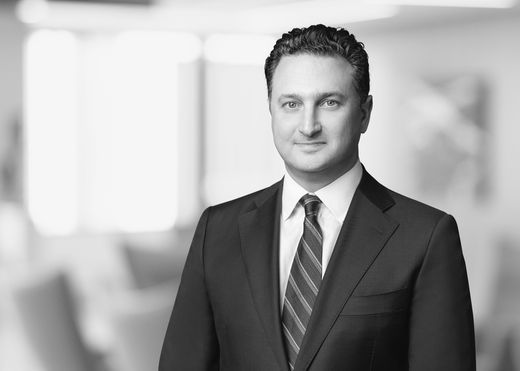U.S. Supreme Court: Disseminators of False Statements with Intent to Defraud Can Be Held Liable Under Securities Exchange Act Rule 10b-5

Key Points
- The United States Supreme Court held that a disseminator of a false statement with intent to defraud can be held liable under subsections (a) and (c) of Rule 10b-5, §10(b) of the Exchange Act and §17(a)(1) of the Securities Act, even if they would not be considered the “maker” of the statement within the meaning of Janus Capital Group, Inc. v. First Derivative Traders.
- The Court’s ruling ended the SEC’s losing streak at the high court.
Summary
On March 27, 2019, the U.S. Supreme Court in Lorenzo v. Securities and Exchange Commission, No. 17-1077, issued a 6-2 decision holding that disseminating false or misleading statements with the intent to defraud violates federal securities laws, even if the disseminator did not “make” the statements.
Background
Petitioner Francis Lorenzo sent two emails to prospective investors while he was the director of investment banking at a New York brokerage firm. The firm’s president supplied the content of those emails, which described a potential investment in a company with “confirmed assets” of $10 million. In reality, the company’s total assets were less than $400,000, a fact that Lorenzo knew before he sent the emails. In 2015, the Securities and Exchange Commission (SEC) found that Lorenzo violated Rule 10b-5, §10(b) of the Exchange Act and §17(a)(1) of the Securities Act by sending false and misleading statements to investors with intent to defraud them. Applying Janus Capital Group, Inc. v. First Derivative Traders, 564 U.S. 135 (2011)—which held that the “maker” of a statement for purposes of Rule 10b-5(b) is the person or entity with “ultimate authority” over that statement, “including its content and whether and how to communicate it”—the District of Columbia Circuit held that the brokerage firm’s president, not Lorenzo, had “made” the false statements in the emails. Thus, the Court of Appeals rejected the SEC’s finding that Lorenzo had violated Rule 10b-5(b), but sustained the SEC’s finding with respect to Rule 10b-5(a) and (c), as well as Exchange Act §10(b) and Securities Act §17(a)(1) (the “provisions”). Lorenzo appealed and the U.S. Supreme Court granted certiorari.
Opinion
Justice Breyer delivered the 6-2 opinion of the Court, in which Chief Justice Roberts, Justice Ginsburg, Justice Alito, Justice Sotomayor and Justice Kagan joined. The majority opinion began by reviewing the relevant subsections of Rule 10b-5, Exchange Act §10(b) and Securities Act §17(a)(1). Subsection (a) of Rule 10b-5 makes it unlawful to “employ any device, scheme, or artifice to defraud.” Subsection (b) makes it unlawful to “make any untrue statement of a material fact.” Subsection (c) makes it unlawful to “engage in any act, practice, or course of business” that “operates … as a fraud or deceit.” Exchange Act §10(b) makes it unlawful to “use or employ… any manipulative or deceptive device or contrivance” in contravention of SEC rules and regulations. Lastly, Securities Act §17(a)(1) makes it unlawful to “employ any device, scheme, or artifice to defraud.”
Upon examining the relevant language, precedent and purpose, the Court concluded that dissemination of false or misleading statements with intent to defraud falls within the scope of subsections (a) and (c) of Rule 10b-5, as well as the relevant statutory provisions, even if the disseminator is not the “maker” of the untrue statement under Janus. By sending emails that Lorenzo knew to contain material untrue statements, he “employ[ed]” a “device,” “scheme,” and “artifice to defraud” within the meaning of subsection (a) of the Rule, §10(b) and §17(a)(1). That conduct also constitutes “engag[ing] in a[n] act, practice, or course of business” that “operate[d]…as a fraud or deceit” under subsection (c) of the Rule. The majority supported its conclusion by referencing dictionary definitions of the terms, “device,” “scheme,” “artifice,” “act,” and “practice,” suggesting that the provisions “capture a wide range of conduct.” Though the majority acknowledged the possibility of “borderline cases,” it saw nothing borderline about disseminating false statements to prospective investors with the intent to defraud.
Lorenzo argued that the natural meaning of these provisions did not apply to his conduct, because he can only be held liable for false statements through the provisions that refer specifically to false statements. In other words, he contended that the provisions concerning “scheme liability claims” only apply to conduct other than misstatements. The majority rejected Lorenzo’s mutually exclusive reading of Rule 10b-5 on the basis that the Court and the SEC have “long recognized considerable overlap among the subsections of the Rule and related provisions of the securities laws.”
Dissent
Justice Thomas filed a dissenting opinion joined by Justice Gorsuch. Justice Kavanaugh was recused, as he was the dissenting member of the District of Columbia Circuit panel that heard this case. The dissent contended that applying subsections (a) or (c) of Rule 10b-5 to the conduct at issue would render Janus “a dead letter.” The majority rejected this argument on the grounds that Janus focused on drafters of misstatements issued by a different entity that controlled the content of the statement, but was silent as to disseminators of false statements, and accordingly, Janus would continue to be relevant to individuals who neither make nor disseminate misstatements.
The dissent also argued that if Lorenzo’s conduct qualifies for primary liability under §10(b) and Rule 10b-5(a) or (c), then virtually any aider and abetter who assists with the making of a fraudulent misstatement will be primarily liable and thereby subject to both SEC enforcement and private lawsuits. The dissent stressed the importance of the distinction between primary and secondary liability because there is no private right of action against aiders and abetters. The majority rejected this contention, reasoning that a single conduct can be a primary violation with respect to one offense and aiding and abetting with respect to another, and specifically that: “Those who disseminate false statements with intent to defraud are primarily liable under Rules 10b-5(a) and (c), §10(b), and §17(a)(1), even if they are secondarily liable under Rule 10b-5(b).”
Impact
The Supreme Court’s decision in Lorenzo ended the SEC’s losing streak before the Court. Last term, the justices ruled against the SEC in a dispute over the constitutionality of administrative law judges and curbed the SEC’s broad view of Dodd-Frank whistleblower protections. Lorenzo clarifies liability for disseminators of misleading information, even if they did not have ultimate authority over the content of the false statements, as long as the disseminators possessed intent to defraud. Creative private plaintiffs will certainly tout the Lorenzo decision in securities class actions to bring suits against third parties who under Janus may not have been considered “makers” of the alleged misstatements or under Central Bank of Denver, N.A. v. First Interstate Bank of Denver, N.A., 511 U.S. 164 (1994), could not be held liable for aiding and abetting violations of §10(b). The SEC will likely also consider a wider range of possible enforcement under §10(b). At the same time, the Court’s emphasis on the particular egregious facts of Lorenzo’s intentional actions to disseminate misstatements may limit the impact on previous decisions regarding liability of “makers” of statements and aiders and abettors under Rule 10b-5, such as Janus and related cases.



